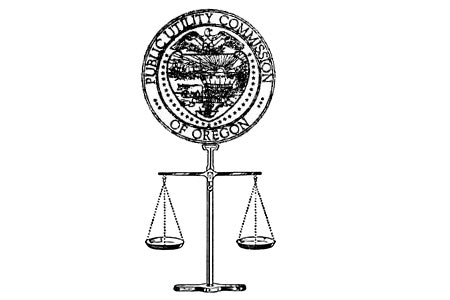Who Owns and Regulates Oregon’s Energy Utilities?
Posted on May 6, 2021 by Janice Thompson
Tags, Energy

At CUB, we occasionally hear directly from residential customers about issues with their energy utility. One variation is: “My utility isn’t addressing my complaint - who else can I call?” The answer depends on who owns your utility. Is it an investor-owned, or consumer-owned utility? The 1984 ballot measure that created CUB gave us a broad utility consumer protection mandate, but with an emphasis on advocating for residential customers of Oregon’s investor-owned utilities. What does it mean, though, to be investor-owned and how are these companies regulated? And what are the consumer-owned utilities in Oregon and how are they regulated?
Investor-owned utilities (IOUs), are private companies that, in return for being the sole utility in their service territories, are regulated as monopolies by the Oregon Public Utility Commission (PUC). Oregon’s electric IOUs are Portland General Electric (PGE), Pacific Power, and Idaho Power. Oregon’s natural gas IOUs are NW Natural, Avista, and Cascade Natural Gas. An IOU’s owners are people who purchase shares or debt associated with the utility company. Like other private companies, IOUs strive to benefit their owners.
One of the PUC’s major mandates is regulating utility rates and service. Just and reasonable rates are the goal, which relies on assessing costs, performance, and risks. Service regulation focuses on ensuring quality and reliability. The PUC also requires IOUs to do integrated resource planning. The core planning questions are: Does the utility have the capacity to meet future energy needs? How will that energy be produced? What steps can be taken to reduce energy demand? CUB is involved in all of these proceedings to protect residential customer interests. For example, CUB reviews utility costs to ensure that ratepayers are not covering costs that should be borne by the shareholder owners of IOUs.
According to the PUC’s 2019 Oregon Utility Statistics book, the latest available, Oregon’s electric IOUs provide service to approximately 74 percent of customers in the state. Most of that service is provided by the two major electric IOUs, PGE and Pacific Power. PGE serves 780,000 residential customers while Pacific Power serves 517,000 residential customers. Idaho Power’s residential customers in Oregon number 13,500. See this map of Oregon’s IOU service areas for more detail.
The rest of Oregon is served by 37 consumer owned electric utilities (COUs), which are public entities that fall into three categories:
- Cooperatives – 19 that serve 10.5 percent of Oregon customers, and are governed by boards elected by co-op members.
- Municipal Utilities – 12 that serve 9.6 percent of Oregon customers, and are governed by elected municipal officials or their appointees to municipal utility boards.
- People’s Utility Districts (PUD) – 6 that serve 5.5 percent of Oregon customers, and are governed by boards elected by residents in the public utility district.
The PUC does not regulate COUs, except in regard to safety. Rather, elected boards and municipal officials set rates, primarily within the context of budget development. Municipal utilities, for example, are required to hold specific rate hearings separate from other budget hearings held by elected officials.
Both IOUs and COUs are subject to some other policy mandates, though not always to the same extent. For example, Renewable Portfolio Standards apply to both IOUs and COUs, but the requirements for COUs are less rigorous. One rationale for this difference is that most COU electricity comes from the hydropower resources of the Bonneville Power Administration. The Oregon Department of Energy also offers this interactive online guide to the sources of electricity for every IOU and COU in Oregon.
There are no natural gas COUs in Oregon, and natural gas service is not available in all parts of the state. Natural gas service availability is linked to gas companies typically building their distribution systems in populated areas, near the large interstate pipelines that bring natural gas to Oregon. The largest natural gas IOU is NW Natural, which serves 607,000 residential customers and supplies 80 percent of the natural gas delivered in Oregon. Avista and Cascade each deliver 10 percent of the natural gas used in Oregon and serve a combined total of 157,000 residential customers. This map shows the Oregon service territories of these three natural gas IOUs.
Now, back to the question of getting complaints resolved: No matter who owns your utility, your first step should be to contact the utility’s customer service department. If your energy company is an investor-owned utility, and its customer service department does not resolve your complaint to your satisfaction, you can also contact the PUC’s Consumer Information Center.
At CUB we are occasionally asked “Why doesn’t the PUC handle customer complaints about consumer-owned utilities, since its name is the Public Utility Commission?” One way to think about the PUC’s name is that it regulates private, investor-owned utilities on behalf of the public. For COU complaints, again, the first step should be your provider’s customer service line. If that doesn’t work, we recommend reaching out to your elected representative on the board of your utility or, in the case of some municipal utilities, your elected city councilor. Your county elections office should be able to tell you who is your elected representative overseeing your consumer-owned utility.
To keep up with CUB, like us on Facebook and follow us on Twitter!





08/18/21 | 0 Comments | Who Owns and Regulates Oregon’s Energy Utilities?